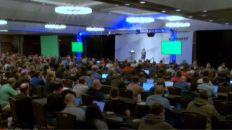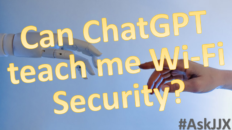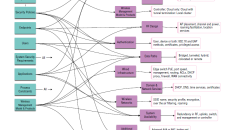This article by Jennifer Minella originally appeared in Network Computing.
Part one of this introduction outlined the basics of radio frequencies and waves. Part two explores the challenges of the half duplex properties of wireless networking, and mechanisms for avoiding collisions that would disrupt traffic.
Wireless technologies, unlike wired IEEE 802.3 technologies, are half duplex. That means a wireless device (AP or endpoint) can listen or talk, but not both at the same time. In addition, in any given radio frequency (RF) region that contains multiple wireless devices, only one device can talk at a time. This creates difficulties in using RF as a shared medium. For instance, because only one device can be transmitting at a time*, a single slow device has the potential to slow down all the wireless traffic in that region. It also introduces the potential for collisions. (Note: In this discussion, I use the term “RF region” loosely because it’s not necessarily limited to a group of devices or a specific physical area. I’ll discuss RF regions in a subsequent post.) *Original text before 802.11ac standard and MU-MIMO.
Wireless is a shared medium, and in any given RF region, all the wireless devices (APs and endpoints) share the same air space. This can lead to collisions if more than one device tries to communicate simultaneously. Wired technologies have techniques for collision detection and collision avoidance, such as CSMA/CD (Carrier Sense Multiple Access/Collision Detection) on 802.3 networks. On a wired network, if a collision is detected, packets can be resent. In wireless, we don’t have the luxury of detecting collisions and resending packets because there’s no way to detect a collision over the air. Instead, WLANs have to make absolutely sure there is no collision. To do so, only one device in the RF region can transmit at any given time.
802.11 WLANs have mechanisms in place to make sure that happens, including CSMA/CA (Carrier Sense Multiple Access/Collision Avoidance) and RTS/CTS (Request To Send/Clear To Send).
Wireless endpoints use CSMA/CA, a rudimentary but well-orchestrated series of listening periods followed by back-off timers to determine when the air is free for devices to send packets. These mechanisms have controls in place to prevent collisions in a controlled environment.
Sometimes, however, more rigid control of the air is required. RTS/CTS collision avoidance mechanisms are typically enabled on endpoint devices that may be out of range from other endpoints, a situation called hidden node. Wireless endpoints transmit logistical details with their data payload, including an announcement that they are transmitting and an expectation of how long they need the air. If endpoints A and B are too far apart, they can’t hear each other’s announcements. If endpoint A can’t hear endpoint B’s transmissions, both endpoints will think the air is free. If they transmit at the same time, it causes collisions. RTS/CTS is designed to address this problem.
Note that RTS/CTS adds overhead because the sender and receiver (usually the AP) have to exchange an additional set of packets before a transmission occurs. Thus, administrators should take care when enabling RTS/CTS. Administrators must monitor and document changes in performance and collisions to ensure changes to collision avoidance mechanisms aren’t have a negative effect on the wireless network.








